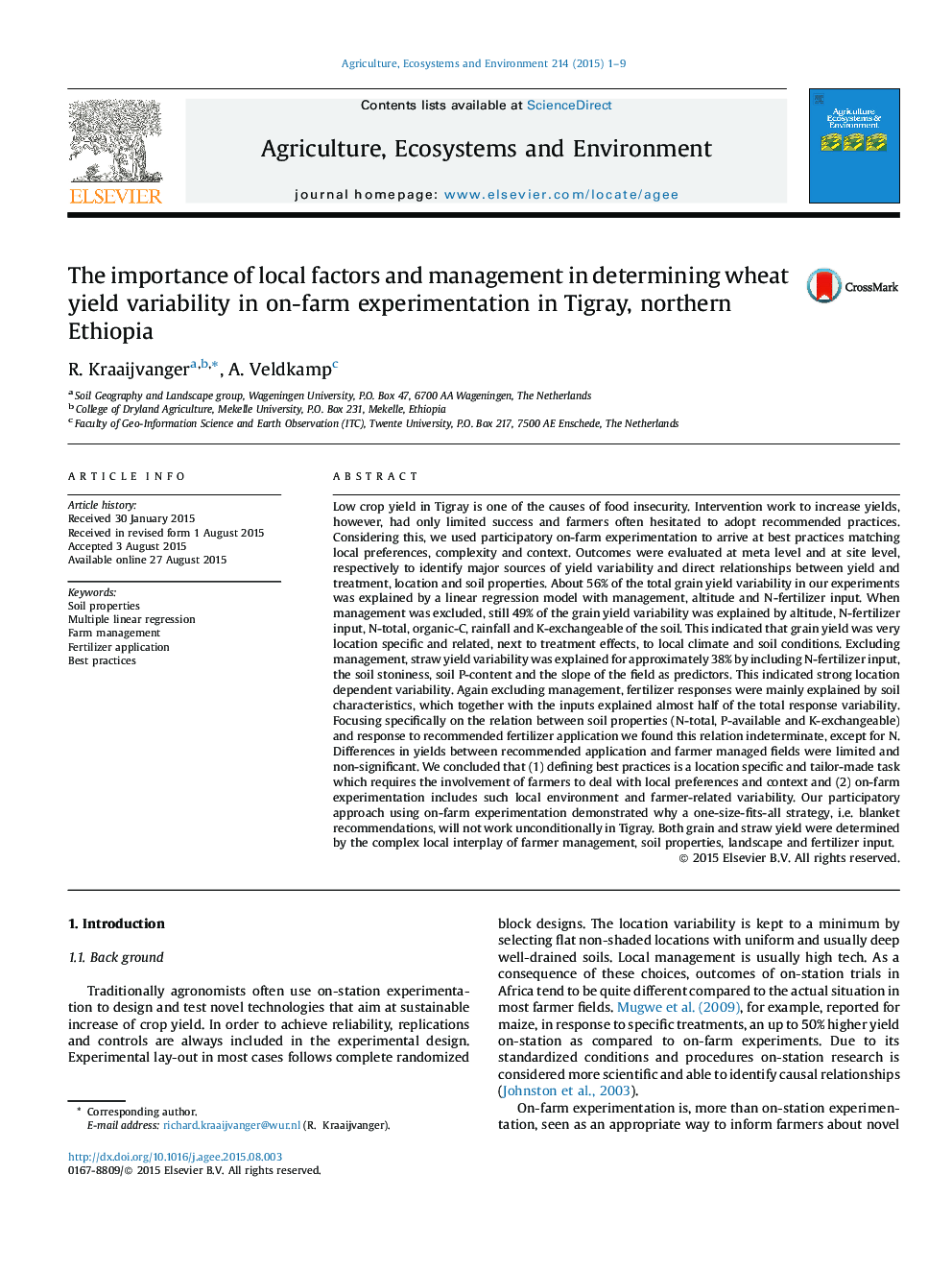| کد مقاله | کد نشریه | سال انتشار | مقاله انگلیسی | نسخه تمام متن |
|---|---|---|---|---|
| 2413606 | 1552038 | 2015 | 9 صفحه PDF | دانلود رایگان |

• Management and environmental factors explained variability in on-farm experiments.
• Response of NP fertilizer correlated negative with soil-N, no correlation for P and K.
• Technology development requires on-farm experiments to respect contextual differences.
Low crop yield in Tigray is one of the causes of food insecurity. Intervention work to increase yields, however, had only limited success and farmers often hesitated to adopt recommended practices. Considering this, we used participatory on-farm experimentation to arrive at best practices matching local preferences, complexity and context. Outcomes were evaluated at meta level and at site level, respectively to identify major sources of yield variability and direct relationships between yield and treatment, location and soil properties. About 56% of the total grain yield variability in our experiments was explained by a linear regression model with management, altitude and N-fertilizer input. When management was excluded, still 49% of the grain yield variability was explained by altitude, N-fertilizer input, N-total, organic-C, rainfall and K-exchangeable of the soil. This indicated that grain yield was very location specific and related, next to treatment effects, to local climate and soil conditions. Excluding management, straw yield variability was explained for approximately 38% by including N-fertilizer input, the soil stoniness, soil P-content and the slope of the field as predictors. This indicated strong location dependent variability. Again excluding management, fertilizer responses were mainly explained by soil characteristics, which together with the inputs explained almost half of the total response variability. Focusing specifically on the relation between soil properties (N-total, P-available and K-exchangeable) and response to recommended fertilizer application we found this relation indeterminate, except for N. Differences in yields between recommended application and farmer managed fields were limited and non-significant. We concluded that (1) defining best practices is a location specific and tailor-made task which requires the involvement of farmers to deal with local preferences and context and (2) on-farm experimentation includes such local environment and farmer-related variability. Our participatory approach using on-farm experimentation demonstrated why a one-size-fits-all strategy, i.e. blanket recommendations, will not work unconditionally in Tigray. Both grain and straw yield were determined by the complex local interplay of farmer management, soil properties, landscape and fertilizer input.
Journal: Agriculture, Ecosystems & Environment - Volume 214, 27 December 2015, Pages 1–9